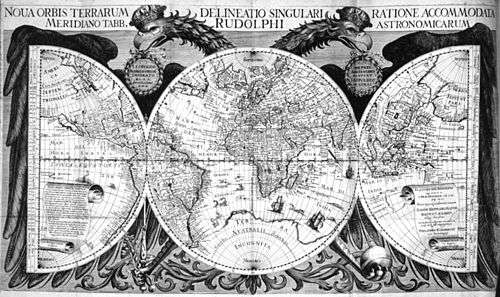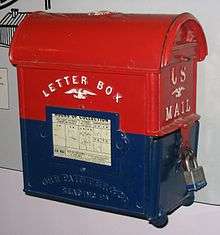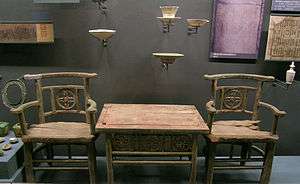Antique

| Collecting |
|---|
| Terms |
| Topics |
A true antique (Latin: antiquus; "old", "ancient") is an item perceived as having value because of its aesthetic or historical significance, and often defined as at least 100 years old (or some other limit), although the term is often used loosely to describe any objects that are old.[1] An antique is usually an item that is collected or desirable because of its age, beauty, rarity, condition, utility, personal emotional connection, and/or other unique features. It is an object that represents a previous era or time period in human history. Vintage and collectible are also used to describe items that are old, but do not meet the 100-year test.[2]
Antiques are usually objects that show some degree of craftsmanship, collectability, or a certain attention to design, such as a desk or an early automobile. They are bought at antique shops, estate sales, auction houses, online auctions, and other venues, or estate inherited. Antique dealers often belong to national trade associations, many of which belong to CINOA, a confederation of art and antique associations across 21 countries that represents 5,000 dealers.
Definition

The common definition of antique is a collectible object such as a piece of furniture or work of art that has a high value because of its considerable age, yet it does in fact vary depending on the source, product, and year. Motor vehicles are an exception to the 100-year rule. The customary definition of antique requires that an item be at least 100 years old and in original condition.
In the United States, the 1930 Smoot-Hawley Tariff Act defined antiques as, "...works of art (except rugs and carpets made after the year 1700), collections in illustration of the progress of the arts, works in bronze, marble, terra cotta, parian, pottery, or porcelain, artistic antiquities and objects of ornamental character or educational value which shall have been produced prior to the year 1830." 1830 was the approximate beginning of mass production in the United States. These definitions were intended to allow people of that time to distinguish between genuine antique pieces, vintage items, and collectible objects.
The alternative term, antiquities, commonly refers to the remains of ancient art and everyday items from antiquity, which themselves are often archaeological artifacts. An antiquarian is a person who collects and studies antiquities or things of the past.
China
Traditionally, Chinese antiques are marked by a red seal, known as a 'chop', placed there by an owner. Experts can identify previous owners of an antique by reading the chops. The pre-revolution Chinese government tried to assist collectors of Chinese antiques by requiring their Department of Antiquities to provide a governmental chop on the bottom of a Chinese antique. This chop is visible as a piece of red sealing wax that bears the government chop to verify the date of the antique. The government of the People's Republic of China has its own definitions of what it considers antique. As of the Cultural Revolution and China's opening trade to other countries, the government has tried to protect the definition of a Chinese antique.
Antiquing

Antiquing is the act of shopping, identifying, negotiating, or bargaining for antiques. People buy items for personal use, gifts, or profit. Sources for antiquing include garage sales and yard sales, estate sales, resort towns, antique districts, collectives, and international auction houses.
Note that antiquing also means the craft of making an object appear antique through distressing or applying an antique-looking paint applications. Often, individuals get confused between these handmade distressed vintage or modern items and true antiques. Would-be antique collectors who are unaware of the differences may find themselves paying a high amount of money for something that has little value in the antiquing industry.
Antique furniture

Antique furniture is a popular area of antiques because furniture has obvious practical uses as well as collector value. Many collectors use pieces in their homes, and care for them with the hope that they hold their value or appreciate. This is in contrast to buying new furniture, which typically depreciates from the moment of purchase.
Antique furniture includes dining tables, chairs, bureaus, chests etc. The most common woods are mahogany, oak, pine, walnut, and rosewood. Chinese antique furniture is often made with elm, a wood common to many regions in Asia. Each wood has a distinctive grain and color. Many modern pieces of furniture use laminate or wood veneer to achieve the same effect. There are a number of different styles of antique furniture depending on when and where it was made. Some examples of stylistic periods are; Arts & Crafts, Georgian, Regency, and Victorian.
See also
- List of antiques experts
- Antiquarian book trade in the United States
- Antique tool
- Antiques restoration
- Antiques Roadshow
- Authentication
- Del Mar Antique Show
- The San Francisco Fall Antiques Show
- Dolly Johnson Antique and Art Show
- Primitive decorating, a style of decorating using antiques
- American Pickers
- Pawn Stars
- Vintage (design)
References
- ↑ "Definition of ANTIQUE". www.merriam-webster.com. Archived from the original on 17 August 2017. Retrieved 6 May 2018.
- ↑ "The difference between antique, vintage, and collectible item. - Antique HQ". www.antique-hq.com. Archived from the original on 22 December 2017. Retrieved 6 May 2018.
External links
| Look up antique in Wiktionary, the free dictionary. |